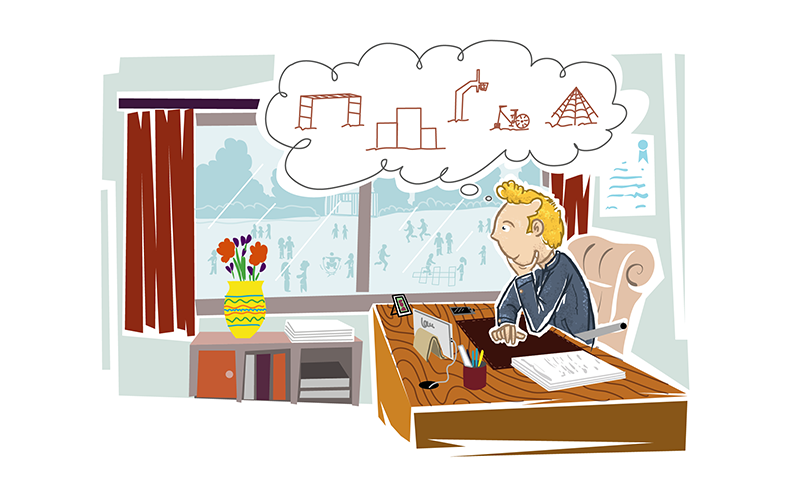How I prepare teachers and activities in my school
Living Democracy » Principals » ACTIVE SCHOOL » Preparation » How I prepare teachers and activities in my schoolA physically active school is not just for the students, but for all! Therefore, the teachers and staff need to be part of this program. This means that we begin with ourselves before we start together with the students in our school.
Our program will be designed to be more inclusive, active, and fun while helping all members of the school community to develop a lifetime commitment to wellness.
Together with a small team, I as the school leader, will design the content and the time plan for my school. The core team WILL NOT ONLY BE COMPRISED OF PE TEACHERS! Non-sportive colleagues will have to participate as well.
Our program allows the participants to develop a variety of movement skills and teamwork capabili-ties so that everyone feels more comfortable in both group and movement environments, thus making it more likely that people will continue with the program on their own or participate with others.

A. Information: Our understanding as teachers and staff
- We focus on lifelong activities rather than team or individual sports. While weight training, running, yoga, aerobics, frisbee and softball may all be considered team and/or individual sports, these activities tend to be carried over to adulthood more often than other competitive sports like football, basketball, soccer, and track and field events.
- We implement physical activities that students enjoy and will continue to seek out on their own. Thus, we teach them movement activities they like so much that they want to do them at recess, after school, and at home as well, preferring them over video games or watching television. Part of the goal is to understand and plan the activities as “fun” rather than “exercise.”
- We will provide weight and resistance training classes and equipment as an alternative to traditional PE classes, teaching a specific area of lifelong movement and exercise that children often carry with them into adulthood. We will offer a shorter, four to six-week program to give our students a taste of their future physical options.
- We will include activities for all students and adults. Some are more athletic than others, and some have developmental issues or physical disabilities that make it harder for them to participate in traditional activities. Our physical education programs will focus on providing a variety of movement-based activities that allow everyone to be involved and may even challenge some of the more fitness-inclined children with activities that are unfamiliar to them.
B. Training for ourselves as teachers and staff
- We take a holistic approach to wellness and well-being. Creating healthy, happy students begins with ourselves.
- All individuals set their own goals. Every goal someone sets is a good one! With the good habits that we adopt we will also show our students that we are not limited to physical education, but that there are simple ways of taking care of our health. Some staff members might show resistance. This is quite normal. But do not give up; health and wellness programs are necessary educational core responsibilities of schools.
- Living and learning democracy finds its parallel in living and learning healthy lifestyle approaches. The entire school can get involved by teaching these same concepts in social studies, science, and even humanities-based classes. Together we will plan these elements. Who will teach what? How can we make sure that all students receive the necessary information in class?
- Together we plan to integrate health and nutrition programs into PE classes and regular classroom settings. Health and nutrition are just as important as math and languages if we really want to make our curriculum relevant. Moreover, strong and healthy students learn better.
- Improving PE and classroom programs is only part of the success strategy. Our school will seek ways of assessing and evaluating the students’ levels of fitness to identify areas in which more progress and improvements must be made. Moreover, all students (and adults) will keep their own personal diary or portfolio in which they can track their own development.
Once the adults in your school have initiated their first steps, you can start with the program for the students.

